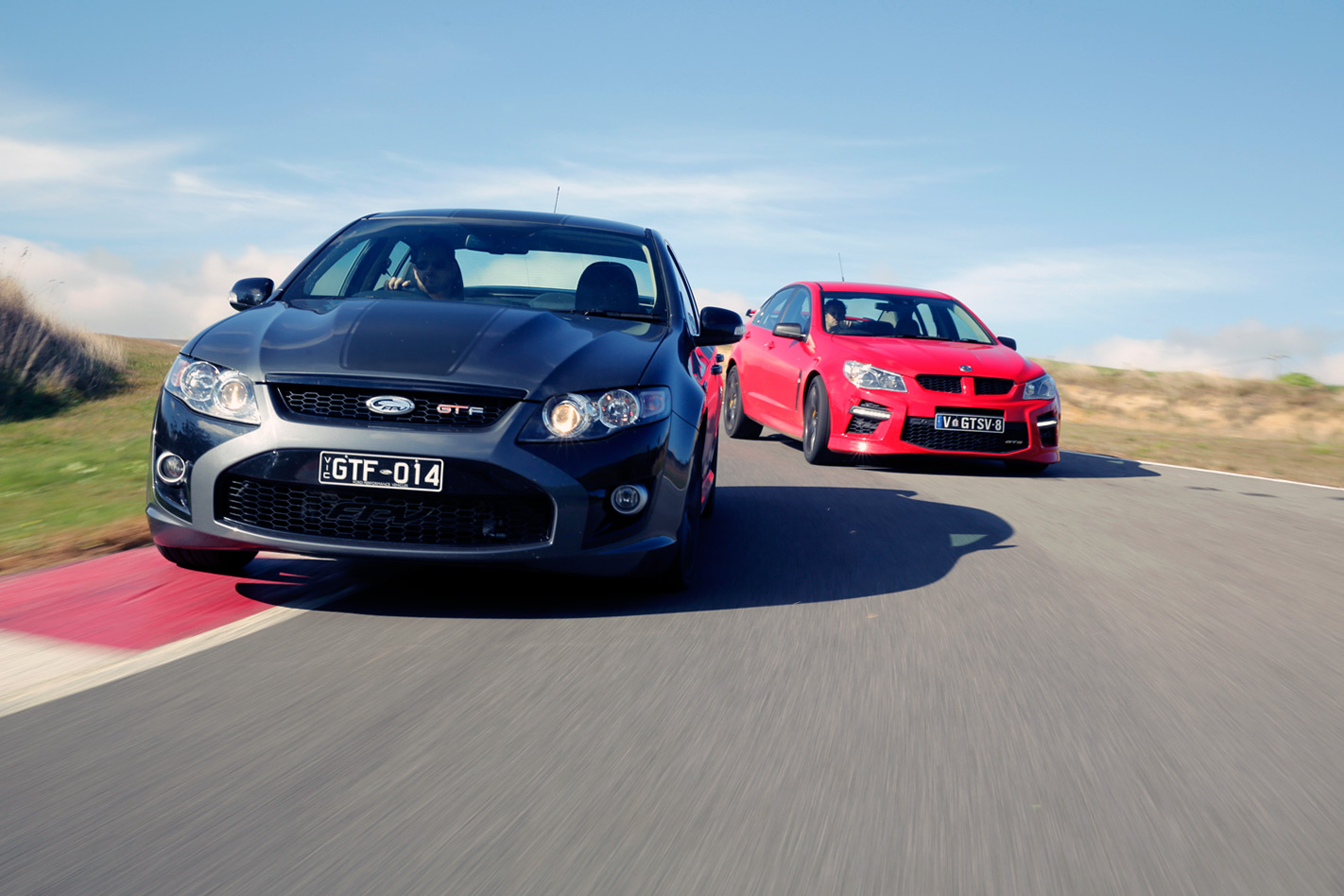FORD’S most powerful FPV-badged sedan has bogged down in controversy after a Wheels test to benchmark the car maker’s claims fell short of official expectations.
Ford today called on Wheels to hold back on publishing the results of its independent dynamometer test, which was conducted under controlled conditions late last week that confirmed the rival HSV GTS as the kilowatt king of Australia.
However, it is the results of the test – which show the 5.0-litre FPV GT-F fitted with the six-speed auto down on where Ford expects it to be – that has now sparked a separate, ultimate showdown between it and the 6.2-litre HSV GTS.
For the record, the HSV GTS – also fitted with a six-speed auto – recorded 330kW at the rear wheels. The FPV GT-F topped out at 311kW.
HSV claims 430kW of peak power for the GTS. Ford officially states the GT-F’s peak power is 351kW, yet its engineers freely admit that the engine can produce “about 15 percent” more in favourable conditions via what it calls “transient overboost”, suggesting a true engine output of about 404kW.
Wheels has been asked to pitch the two cars against each other in a repeat showdown early next week on the same dyno used to confirm the production GT-F’s 351 kilowatts of power at the engine.
Under the rules of the re-test, both Ford and Holden will be allowed to have an engineer on hand to ensure each of the supercharged V8s records its best possible result.
Ford Australia communications and public affairs director Wes Sherwood said Ford does not agree with the result, with internal tests showing the GT-F producing “pretty close” to 351kW at the rear wheels.
“We prefer not to go on the record with this (dyno result),” Mr Sherwood said.
“We were hoping to manage this as just a discussion about our request to consider what we thought was a pretty significant discrepancy and just provide an agreement on whether you would consider retesting or not,” he said.
“That you get something like that on the record is not something that we want to do.”
The original Wheels test was carried out at VCM Automotive in Melbourne’s north, which uses the same type of dyno bench as the one used to establish Ford’s official performance figure for the GT-F.
Wheels‘ exclusive results show that the cars are much closer than the two manufacturers’ official claims suggest – just 19kW separates the two, not 79kW – with VCM owner Mario Pancione adamant that the results are an accurate reading of each car’s true performance, despite Ford’s concerns.
Mr Pancione said his company has dyno-tested 30 HSV GTS models since the car’s launch last year, as well as “at least” 20 FPV GT models.
“The results (of the Wheels test) were right on the money,” he said.
“Good luck to them (Ford) if that’s what they think, but I can only deal with the facts and I’m confident the test we completed was correct.
“I’d love to have Ford come back out and we’ll test the car right in front of them.”
A Ford engineer told Wheels that results can also vary widely depending on test conditions such as whether the vehicle is strapped down on the bench appropriately, with losses from the driveline – resulting in the different figures at the flyweel and at the rear wheels – falling by as much as 15 percent.
A teaser video of the dyno test posted late last week drew criticism from viewers that the GTS was not tied down properly, and could potentially alter the outcome. However, the video was of the HSV’s initial calibration run on the unit, and the straps were tightened for the run that produced the result.
“It (driveline power loss) is not a fixed number that you can quote and say ‘this is what the number is, this is what it will do at the rear wheels’,” the engineer said.
He said it is possible to see variations in the loss at the rear wheels, “but not at the level that we’ve seen under your conditions”.
“I would expect a 335kW car that is heat-soaked … or a GT-F that is heat-soaked and has fuel issues to do your number.”





